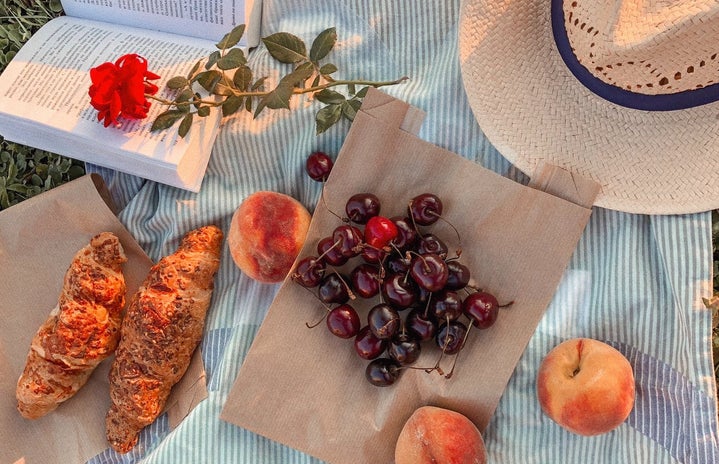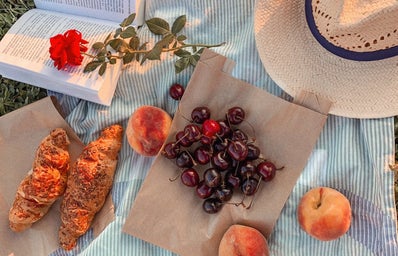I’m sure we’ve all come across them on our feeds: dark academia outfit tutorials, light academia girls in European cities like Paris, cottagecore photoshoots with people frolicking in fields and eating fruit they’ve grown themselves and pastries they’ve just baked. This is all tied together with the phrase, “That’s so aesthetic!” But how, and why, did these ultra-specific feeds find such traction during the peaks of the pandemic? Why are we so obsessed with them?
These aesthetics definitely existed before the pandemic, in places like Pinterest, Tumblr, and Instagram, with their niche memes (“Choose your fighter!”) and descriptions of how to be the aesthetic you decided upon. There are themed playlists, room decors, booklists, and so much more. However, without TikTok, there is a high chance that these subcultures would not have become so prevalent in the Gen Z mainstream. Aesthetics are a way to explore different styles and find a sense of solidarity, as well as inspiration. They appeal to those who feel a pull towards a certain look but don’t have the words to describe it. This is where the fashion community steps in. Most of Gen Z is under the age of 25, and we’re all trying to figure out who we are. Fashion helps us do that, and these subcultures help us identify with a pre-determined aesthetic, and through that, a community.
The first definable aesthetic in the mainstream was the VSCO girl aesthetic. Just to jog your memory, in case you’ve forgotten: scrunchies, a specific brand of lip balm, Fjallraven backpacks, Hydro flasks and a focus on saving the turtles. Now, there are a plethora, and they all intersect and intertwine. The main ones are, perhaps, dark and light academia, “Y2K”, as well as cottagecore. Other examples are “Coconut Girl”, “fairycore”, “grungecore”, “forest academia” and “model off duty”. To fully understand the impact of these aesthetics, I’ll be explaining the main three (dark academia, light academia, and cottagecore), as well as some of their pitfalls.
Dark academia is, as defined by Wikipedia, associated with “ancient art and classic literature”, along with the idealisation of “higher education, writing/poetry, the arts and classic Greek and Gothic architecture.” Picture autumn, calligraphy, misty mornings, late-night studying in dim light. Walking to campus in dark colours, tweed, androgynous vintage blazers, sophisticated coats. The subculture appeals to those with a fervour for consuming knowledge, for the classics, for the broodiness and darker aspects of the world. Ultimately, a love of learning is the binding thread. With libraries and schools closed due to the pandemic, learning and academia became aspirational.
“The Secret History” by Donna Tartt is the novel that has been credited with the rise of dark academia. Unsurprisingly, literature, art, and films play a significant role in defining the subculture and aesthetic. Films such as “Kill Your Darlings” and the novel “If We Were Villains” by M.L Rio, have a dedicated LGBTQ+ following. Gender norms aren’t enforced, as is seen in the gender-neutral clothing worn. However, there are several issues with the fervent love people have for dark academia. Firstly, it idolises elitist groups and the exclusivity thereof. A big component of dark academia is pulling all-nighters and drinking copious amounts of coffee. Promoting and glamorising this is very unhealthy because of the dangerous repercussions. You don’t need to be overworked to be a dark academic. The subculture is also very Eurocentric: most of the books declared as dark academic staples are written by white authors, as are the actors in the films. In the aesthetic community, there also is not much body diversity. There are changes being made: many of the accounts I follow make a concerted effort to broaden the community in terms of body diversity, and diversity in general, but there is still a long way to go.
Light academia, on the other hand, is the “bright and lighthearted” sister to “its moody, goth-leaning counterpart”. There is softer, calmer energy associated with the aesthetic, although both share a love of learning. There is a focus on literature, music, art, and history. The main difference in the fashion is the colour palette: beige, white, cream and cosiness. For those who don’t identify with the heaviness of dark academia, the positive outlook of this aesthetic is more appealing. Light academia has been described as akin to a “bridge between cottagecore and dark academia”. Essentially, it’s tea vs coffee, spring vs autumn. Otherwise, since it emerged from dark academia itself, the problems with light academia are very similar to that of its parent subculture.
Finally, cottagecore is inspired by romanticised rural and farm lifestyles, and the idea of the simple life, harmoniously existing in tandem with nature. Cottagecore is inherently escapism: escapism from hustle culture, from capitalism and discrimination, from technology, into the arms of sustainability, mindfulness, and peace. Picture white flowy dresses, fields of flowers, gardening, baking, sitting in nature reading poetry and making crafts. Picture Taylor Swift’s “folklore” album. The issue with this, however, is the focus only on the idyllic aspects of rural living, and not on the actual lives and hardships of farmworkers. Yet, modern-day cottagecore looks at the formation of this fantasy, at a world without all the repressive norms present in our society.
The aesthetics seem to provide us with more cookie-cutter identities, but this is not the case. We can look at these subcultures, the issues therein, and bear them in mind as we strive to make them more inclusive. We do not have to stick to one aesthetic: we can combine and pick and choose, like the multi-faceted beings we are. We can dream and fantasise, and these aesthetics allow us to do so.
Most importantly, I think, is that these subcultures, these sets of lifestyles, provide us with a form of escapism. Whether it be through identifying with the darker undertones of dark academia, listening to light academia playlists, and imagining ourselves in an idyllic, isolated cottage with the aroma of freshly baked homemade bread and our little chickens in the garden: a lot of us really needed to escape in 2020.


